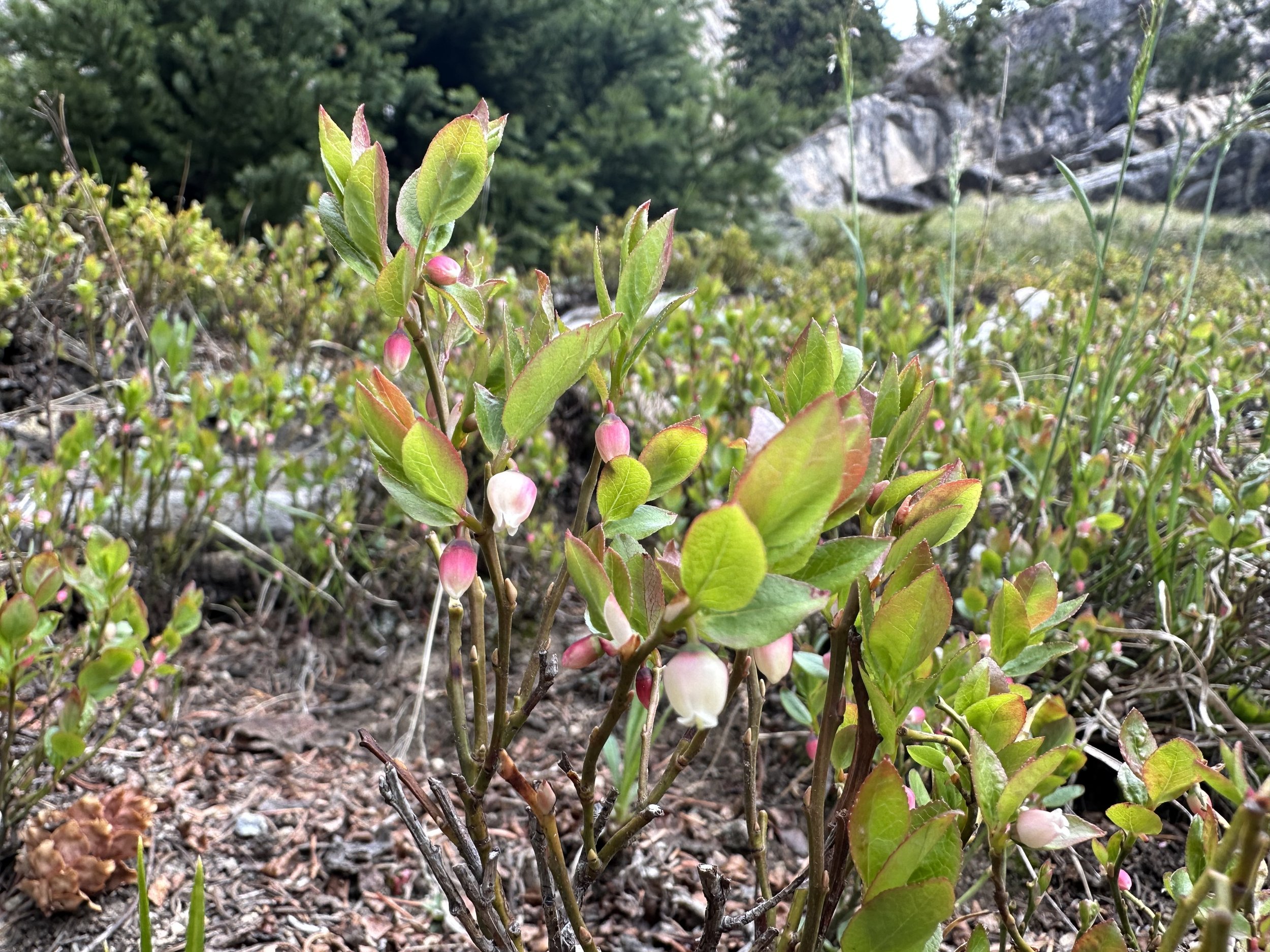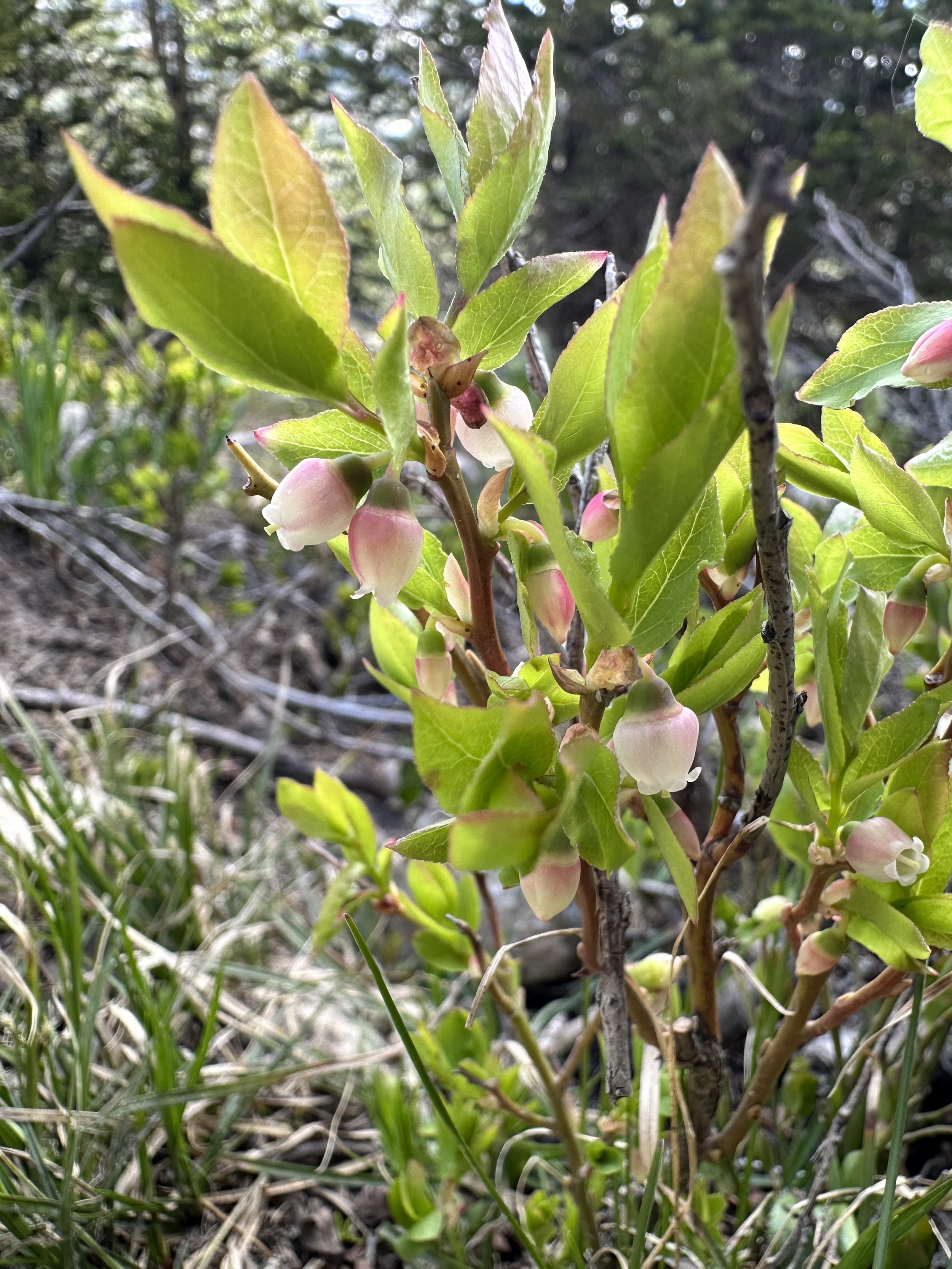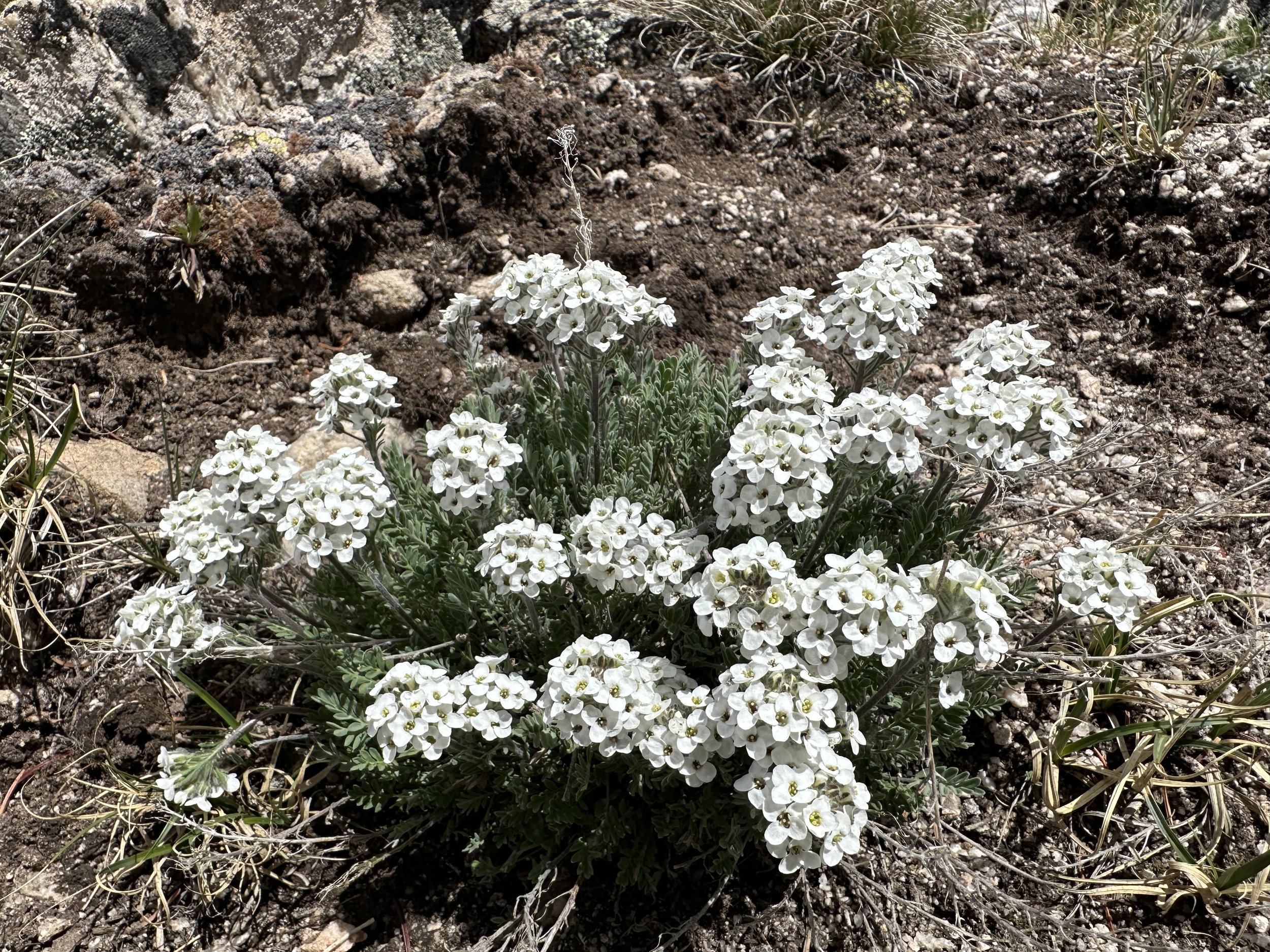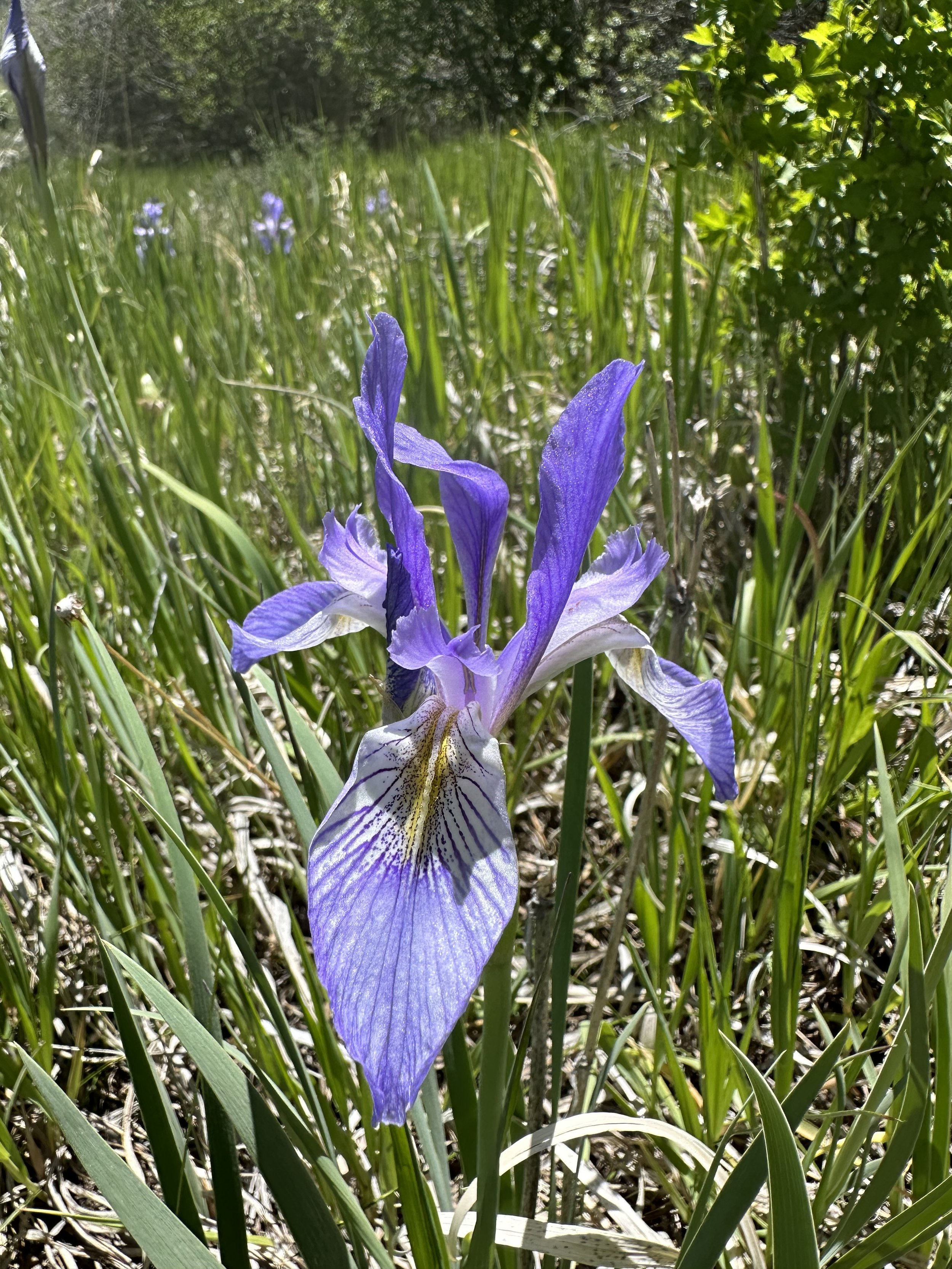Potentilla glaucophylla, front side of leaf, June 13, 2023
Back side of leaf
Common & scientific name
Blue-leaf cinquefoil, Potentilla glaucophylla
Family
Rose, Rosaceae
Location
Upper Lost Man, 11,500’
Fun, weird, helpful, or little known fact
Blue-leaf cinquefoil is very common in the subalpine and alpine on the Pass. It has 5 to 7 leaflets arranged palmately, like the fingers of a hand connected in the middle. The leaves are green, with a bluish tint, on both sides (with the backside a bit less blue-green, but neither side is hairy). Its leaflets are serrate, or toothed, but not for the whole length of the leaf (see leaves in photos).












































